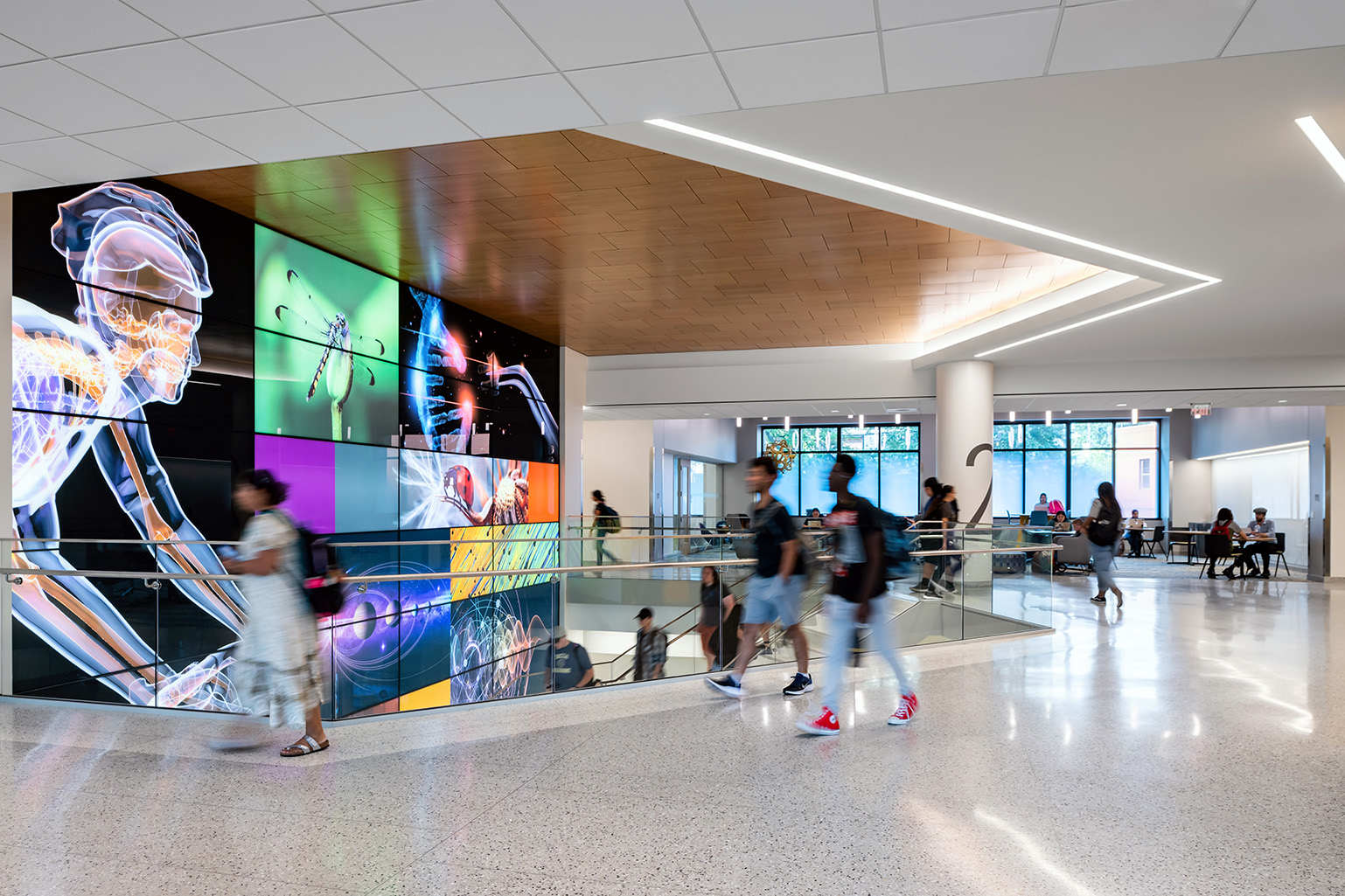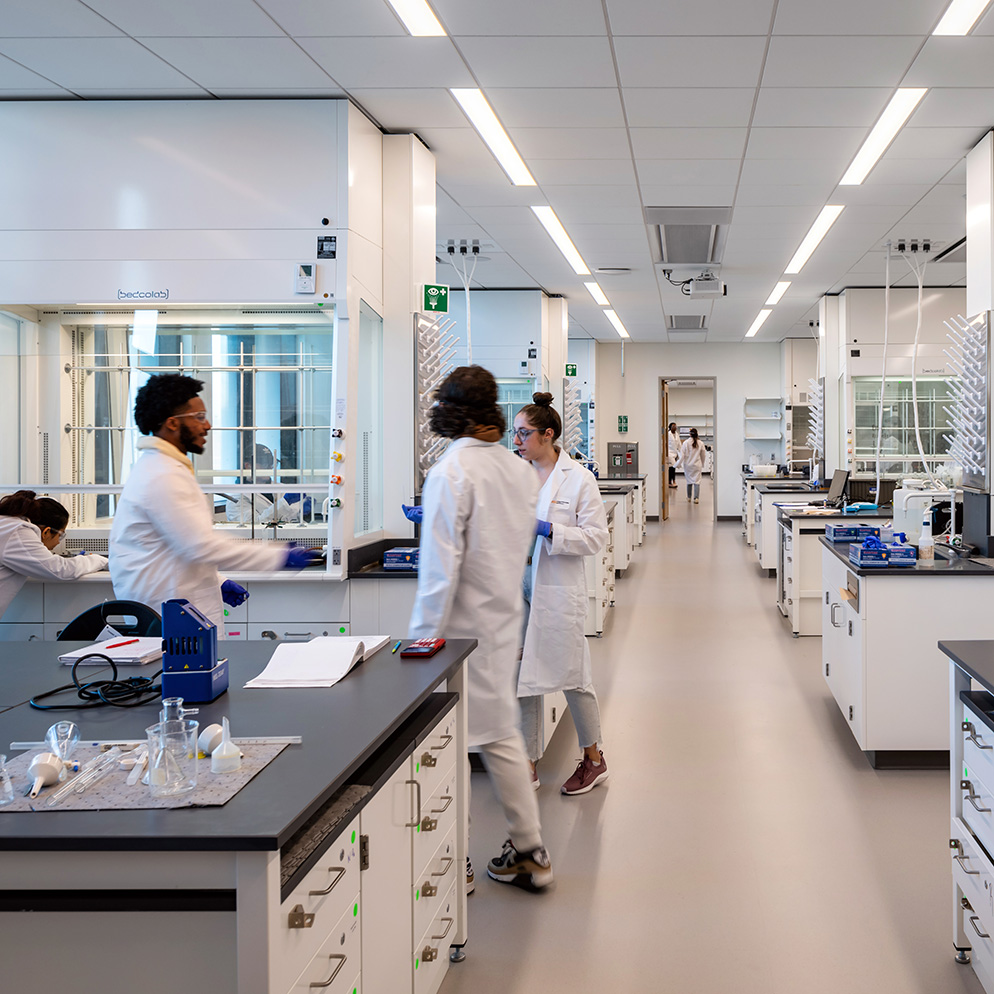
Learn, Discover, Innovate
VCU College of Humanities and Sciences celebrates the opening of the new STEM Building.
On April 26, 2023, VCU held a ribbon-cutting ceremony for the 168,000-square-foot, six-floor building dedicated to the maths and sciences located at the site of the former Franklin Street Gym at 817 W. Franklin St.

“I always say, we’re here to meet the needs of students and patients. This is a six-story version of how we will meet the needs and put the needs of students first,” said VCU President Michael Rao, Ph.D., who described how the STEM building has been among his top priorities since he came to VCU in 2009.
The STEM building expands lab, classroom and office space for the College of Humanities and Sciences, which is home to 17 departments, two schools and three programs. Nearly 60% of VCU undergraduate students are enrolled in the college.
“The College of Humanities and Sciences’ STEM Building will be the center of instruction, collaboration and discovery for the sciences and mathematics at VCU,” said Catherine Ingrassia, Ph.D., dean of the College of Humanities and Sciences. “It will serve the vast majority of undergraduates when they take the introductory and early-level classes in their majors, and it will also provide space for upper-level laboratory courses.”
The building features 32 teaching labs; the Math Exchange, an innovative facility for math instruction; a Science Hub for student/faculty interaction, study groups and specialized support for STEM classes; two 250-seat, team-based learning classrooms; computer labs; and large- and small-capacity flexible classrooms. Instructional wet and dry labs are included in addition to classrooms for STEM subjects.
The building provides classroom and study space for more than 10,000 students who will take up to 70 courses in the building each semester, beginning in fall 2023. And it offers a common space for VCU students taking gateway and upper-level courses in anthropology, biology, chemistry, forensic science, kinesiology, mathematics, physics and psychology.
"This is a six-story version of how we will meet the needs and put the needs of students first." - VCU President Michael Rao, Ph.D.
“This building is built for 21st-century students,” Ingrassia said. “In this new building, our students will learn, discover and innovate. They will develop into the next generation of scientists, researchers, medical professionals and educators.”
“A lot of times in universities, our goal is to break down silos. This building very tangibly breaks down silos,” said Sally Hunnicutt, Ph.D., associate dean for faculty and academic aff airs in the College of Humanities and Sciences, who has overseen the project. “In a very real sense, this building is designed to put the VCU student experience front and center. We are providing them with a brand new, state-of-the-art space in which they will begin the practice of science and math and learning in general.”
As he was walking into the STEM building for the event, VCU President Michael Rao, Ph.D., added, he spoke with a student.
“He said to me as I was walking in — and this may be one of the most important things that I say — is that ‘This is really cool.’”
Funding for the approximately $125 million project was provided by the Commonwealth of Virginia in 2019. The building was designed by Ballinger and Quinn Evans Architects and constructed by Hourigan.


